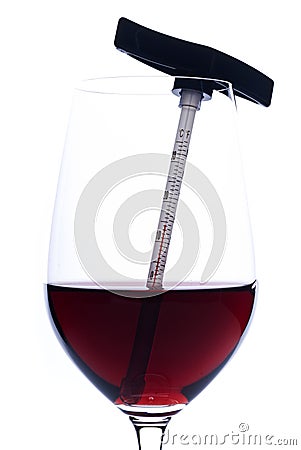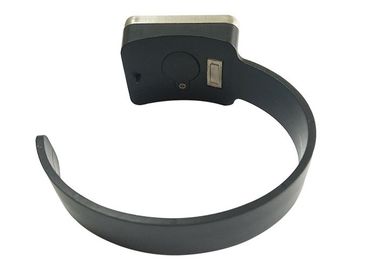Red wine temperature
Quick guide to the best red wine temperature. But room temperature is typically around degrees, and the ideal serving temperature for red wine is anywhere between and degrees.
So, yeah: room temp is no bueno. Red wines should be stored at a constant temperature of around 55° F. Storing wine below 45° F can slow the aging process.

Extremely low temperatures can cause sediment to develop in the wine or cause the water in the wine to freeze and expan which could push the cork out of the bottle. Red wine served at room temperature is also an oversimplification that you want to avoid. Valpolicella Classico (Corvina) and Beaujolais (Gamay) fall in the section of chilled reds.
Light, fruity red wine: These are to be served slightly chilled. The optimal red wine serving temperature for full-bodied wines is between 60–65°F. Light- and medium-bodied red wines have a slightly larger, lower ideal serving temperature around 55–62°F.
While most people mistakenly believe that red wine should be stored and served at room temperature, ° F is too high to create the best flavor profile.

Considering the surrounding air temperature of 24°C and my personal preference, 19°C was the perfect serving temperature for this Mornington pinot. If I repeated the process with a different style of red wine, made from a different variety, I would get a completely different result.
To determine the best temperature for red wine, we have to consider the type of red wine it is. There are many different types of red wine, but we will stick with the most popular ones here.
The ideal temperature range for storing red wine is between 45°F and 65°F (8°C and 18°C) with the sweet spot of 55°F (12°C). For outside of suggesting a white wine is preferably served cool and a red wine not too warm, the parameters for what is right and wrong meld somewhere around degrees F. Most premium red wines need to be stored at less than degrees, depending on the varietal.
For example, fine red wines from Beaujolais are best-stored at degrees because their tannins are typically not as tight as red Bordeaux blends, making them more sensitive to high temperatures. Most wine lovers agree that storing temperatures and serving temperatures are two different things.
So, despite that reds and whites are typically served at different temperatures, the ideal storage temperature for both is about degrees F, which will help keep your wines from the risk of aging prematurely. Embry continues: “Keep in. Fining agents include egg white and gelatin.
Wine coolers are, at their most basic, standalone units designed to maintain a consistent temperature —sometimes one suitable for serving rather than long-term storage—whereas a wine cellar is a cabinet or an entire room that stores wine in optimal conditions for long-term aging: a consistent temperature (about 55° F), with humidity control and some way to keep the wine away from light and. What is the ideal temperature to store red wine?
Don’t worry if your long-term storage isn’t exactly at that temperature.

The general temperature window for a red wine fermentation is around 75°F to 89°F. Warmer fermentation temperature also increases the likelihood of fermenting completely dry.
This temperature can vary slightly depending on the acidity of the wine. Temp F: Temp C: Notes: 100° 39° Warm Bath: 68° 20°-66° 19° Vintage Port: 64° 18° Bordeaux, Shiraz: 63° 17° Red Burgundy. And if it gets much hotter, your wine may get “cooke” resulting in flat aromas and flavors.
Temperatures higher than 70° F will age a wine more quickly than is usually desirable. Temperature Everyone seems to agree that temperature is the crucial variable.
Again, though, we don’t know how hot things can get before wine is damaged. Tasting red wine: the serving temperature of red wine. There’s something better than tasting your favorite wine, in good company and paired with the right dish, that enhance its essential characteristics?
And to not compromise or diminish this pleasure, it is better to know some fundamental rules to serve the wine in the right way. Bardolino This light, fruity Italian red wine benefits from a slightly cooler temperature than most reds. Simply put, wine is a perishable good. Although different wines should be served at different temperatures, all wines should be stored at the same temperature.
A wine fridge is a great option, too. As a general rule of thumb, red wines can be stored for between 2-years depending on the sugar, acid and tannin content. Many fine red wines can be aged for up to 1years! White wines on the other hand are generally only stored for to 2-years.
When a wine is col you will be able to perceive the alcohol less, but you also. Red Wines Red wines generally show best at slightly higher temperatures but not as high as you may think! Generally, room temperature (around 70° F, but this can vary somewhat depending on the climate and air conditioning or heating) is generally too warm for most wines! The winemaker, Taylors, says experts maintain drinking red wine at higher temperatures robs it of its finesse and flavour.
Taylors managing director, Mitchell Taylor, says temperature is vital to. You’ll get better color and tannin extraction at the higher end of this spectrum. In this temperature range fruity flavors and aromas don’t get preserved which can be good for a red wine.
Photo about Red wine temperature. A thermometer on a wine glass.